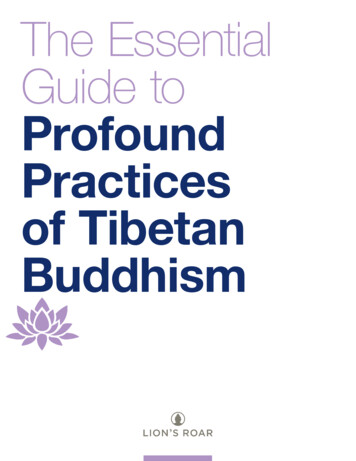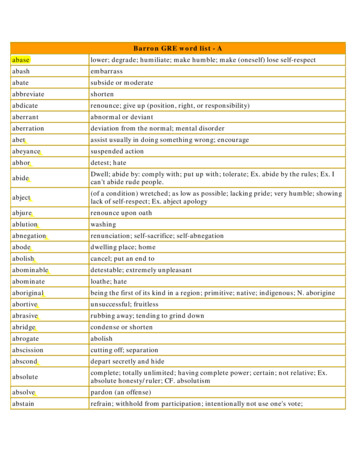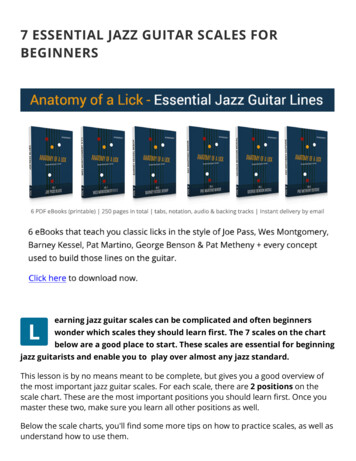
Transcription
The EssentialGuide toProfoundPracticesof TibetanBuddhism
Featuring the wisdom of several great dharmateachers, including a number featured in the Lion’sRoar online learning series, Open Heart, Vajra Mind:Profound Practices of Tibetan Buddhism.Copyright 2021 Lion’s Roar Foundation, except where noted. All rights reserved.Lion’s Roar is an independent non-profit whose mission is to communicateBuddhist wisdom and practices in order to benefit people’s lives, and to supportthe development of Buddhism in the modern world. Projects of Lion’s Roar includeLion’s Roar magazine, Buddhadharma: The Practitioner’s Quarterly, lionsroar.com,and Lion’s Roar Special Editions and Online Learning.2THE ESSENTIAL GUIDE TO PROFOUND PR ACTICES OF TIBETAN BUDDHISMLIONSROAR .COM
CONTENTSYou Are The Great PerfectionYongey Mingyur RinpocheInvestigating RealityElizabeth Mattis NamgyelSacred SlogansJudy LiefDiscovering the True Nature of MindGeshe Tenzin WangyalOvercoming Ego With the Practice of ChödLama Tsultrim AllioneMeditation Only Goes So FarWilla Blythe BakerMahamudra: Looking Directly at the KnowerAndy KarrHow to Practice Lucid DreamingAndrew HolecekThe Heart of the BudhdhaThubten Chodron3THE ESSENTIAL GUIDE TO PROFOUND PR ACTICES OF TIBETAN BUDDHISMLIONSROAR .COM
You Are The Great PerfectionRest in your true nature without effort or distraction—Yongey Mingyur Rinpoche teaches the renowned practiceof Dzogchen.You are already perfect. You are already a buddha. In fact, there’sno difference between your true nature, right now as you sit reading this, and the true nature of the buddha, or any enlightenedbeing for that matter.That’s the view of Dzogchen, a Tibetan word that means “GreatPerfection.” Dzogchen is treasured above all other practices in theNyingma school of Vajrayana Buddhism because it helps us connect directly with our own enlightened nature.Your essence, and the essence of every living creature, is pure,whole, and complete. There’s nothing missing, and that’s why wecall it the Great Perfection. YOU are the Great Perfection. Don’tforget that. Dzogchen is talking about you. This Great Perfectionis you right now, right here in this moment, not some fully developed you after you do a lot more meditation.4THE ESSENTIAL GUIDE TO PROFOUND PR ACTICES OF TIBETAN BUDDHISMLIONSROAR .COM
In Dzogchen, we call this enlightened nature rigpa, or pure awareness. Unlike some approaches in which buddhanature is taught ina more theoretical way, and you need to study and meditate fora long time to figure out what it is, Dzogchen is experiential. Youget introduced to pure awareness directly, right on the spot.A traditional way to describe Dzogchen is in terms of the ground,the path, and the fruition.The Great Perfection is our true nature, whether we realize it ornot. That’s the ground of Dzogchen. It’s the reality of our experience and who we are.But that doesn’t help if we don’t experience it for ourselves. Theway to do that is by having this pure awareness introduced tous, and then getting familiar with it until it becomes stable andenduring. That process is the path.Then, once we’re familiar with our own true nature, once we’verealized it fully and integrated it into every aspect of our lives, wewill fully manifest the enlightened qualities that were there allalong. That’s the fruition.The Ground of DzogchenIt might be a little unclear what this “true nature” really is, so letme explain a bit more about the ground.5THE ESSENTIAL GUIDE TO PROFOUND PR ACTICES OF TIBETAN BUDDHISMLIONSROAR .COM
When we use all these fancy terms like “buddhanature” and “pureawareness,” what are we actually talking about? Well, there arethree main qualities to look for here. We refer to these as the“empty essence,” “luminous nature,” and “all-pervasive compassion.” That’s the ground, your true nature.“Empty essence” means that the true nature of mind, the essenceof pure awareness, transcends all our ideas, concepts, and beliefs.It is utterly beyond all our suffering and problems. It is completelyfree. The term for this is “innate purity”—the essence of who weare was, is, and always will be perfect. It’s completely pure, andnothing can change that.This empty essence is ungraspable, beyond our ordinary way ofseeing things, but it’s not nothing. There is also a luminous, knowing presence. This is what we call the “luminous nature.” Sometimes it’s called “self-clarity,” because this clarity is spontaneousand natural. It’s just there, all the time. Even when we’re asleep,distracted, or completely neurotic. It’s there.The empty essence and clear nature are one and the same.They’re inseparable. This inseparability is the third quality of theground, which we call “all-pervasive compassion.” This open,spacious clarity manifests as all our thoughts, feelings, and6THE ESSENTIAL GUIDE TO PROFOUND PR ACTICES OF TIBETAN BUDDHISMLIONSROAR .COM
perceptions, just like the sun radiates light. These experiences, infact all of our experiences, are none other than the manifestationsor play of pure awareness.The Path of DzogchenBut what good does just knowing this do us? Not much. That’swhy we need a path. We need to translate this from nice wordsand ideas to an actual experience.The Dzogchen path is really quite simple. That’s not to say it’seasy, but it is simple.The only thing we need to do is to recognize this pure innernature. We need to experience it for ourselves. That’s it. If wewant to make it a little more complicated, we could say that firstwe need to have pure awareness introduced to us, and then webecome familiar with it.So, how does that happen?This is where a teacher becomes important. There’s a lot going onin our minds. We have all sorts of memories and reactions, emotions and expectations. In short, we have monkey mind.Seeing the subtle quality of empty clarity in the midst of all thismental activity isn’t easy. If it were, we would have recognizedrigpa a long time ago! But a skilled teacher who has recognized7THE ESSENTIAL GUIDE TO PROFOUND PR ACTICES OF TIBETAN BUDDHISMLIONSROAR .COM
pure awareness in him or herself, and who holds an authentic lineage, can point it out to us. They can help us find our way throughall the complexities of the mind to see this simple, ever presentreality.You might think that because you are already perfect, because thisawakened nature is fully present as the very nature of your mind,then you don’t need to meditate or practice. Nothing could be further from the truth. The trick is how you practice. You still needto meditate, but meditate effortlessly. You still need to practice,but practice naturalness.Rather than practicing with the notion that there’s some levelto achieve beyond where you are right now, the main practice islearning to trust that this original purity is always present, especially when it feels like it isn’t. Every step you take on the pathshould reinforce your trust that pure awareness is right here,right now. Until your recognition is unshakeable, you still need todo formal practice.The Fruition of DzogchenAs I said, the core of the path is simply recognizing the nature ofmind and coming back to that recognition again and again, untilit’s as familiar as an old friend. If you do that, there will come atime when you’ve experienced this pure awareness so thoroughlyand completely that you never lose touch with it. When you’re8THE ESSENTIAL GUIDE TO PROFOUND PR ACTICES OF TIBETAN BUDDHISMLIONSROAR .COM
meditating, you’re meditating in pure awareness. When you’reeating, you’re eating in pure awareness. Even when you’re sleeping, you’re still resting in the recognition of pure awareness.That’s what we call “full realization,” the fruition of the path. Atthis point, all the qualities of the ground, your true enlightenednature, become manifest. These were there all along, but becauseyou didn’t know they were, it was almost as though they didn’texist. But now you know them. You know them thoroughly andcompletely. Perfect wisdom, boundless compassion, the spontaneous capacity to benefit others—all of these manifest.This fruition is simply the full expression of your true nature. It’sas though you go out and travel the whole world, looking andsearching high and low for some peace of mind. But in the end,you come home and realize that everything you were looking forwas right where you started. That’s the Great Perfection.9THE ESSENTIAL GUIDE TO PROFOUND PR ACTICES OF TIBETAN BUDDHISMLIONSROAR .COM
Practice: DzogchenThe trickiest part of Dzogchen practice is that it is not somethingwe can do. The whole point is that we are learning to recognizewhat is already there, while our “doing” impulse is based on theassumption that who and what we are in the present momentneeds improvement. So how do we put this into practice?Dzogchen meditation involves three important qualities: effortlessness, presence, and naturalness. In traditional terms,these three are called non-meditation, non-distraction, andnon-fabrication.To connect with effortlessness, we shift from a mode of “doing” toone of “being.” We let go of the impulse to fiddle with the knobs ofexperience and give ourselves permission to simply be. We rest ineffortless awareness.But while we rest in effortless awareness, we are not lost or distracted. We are fully present, alert and aware. This presence is thesecond quality. It’s not something we need to make happen. It’salready here, with us all the time. When we drop the effort andsimply rest, we’re giving ourselves the opportunity to recognizethe open clarity of awareness, to be this open clarity.10THE ESSENTIAL GUIDE TO PROFOUND PR ACTICES OF TIBETAN BUDDHISMLIONSROAR .COM
Nothing can diminish this effortless awareness. All our thoughts,emotions, perceptions, and impulses arise from this knowingpresence, and dissolve back into it. For this reason, we do notneed to create any special state of mind to experience the mind’sinnate purity. We don’t need to block our thoughts and emotionsor control the movements of our attention. Just be as you are.This is the third quality—naturalness. We let everything unfoldwithout trying to correct, alter, or improve anything.As we grow more comfortable with resting in awareness, thesequalities of effortlessness, presence, and naturalness will emerge,and we will slowly come to see that this spacious awareness iswho we truly are.Yongey Mingyur Rinpoche is a meditation master in the Kagyu andNyingma lineages of Tibetan Buddhism. He is the guiding teacher of theTergar Meditation Community, a global network of meditation groupsand centers.11THE ESSENTIAL GUIDE TO PROFOUND PR ACTICES OF TIBETAN BUDDHISMLIONSROAR .COM
Madhyamika: InvestigatingRealityWhen you look at things closely, says ElizabethMattis Namgyel, you discover the truth ofdependent arising, the middle way betweenexistence and nonexistence.The Madhyamika, or Middle Way teachings, lie at theheart of all the Buddha’s teachings. The Middle Way, whenfully understood, refers to the unshakeable wisdom andconfidence of buddha- hood. We might associate it withthose moments of insight we encounter when everything extraneous to natural being falls away, revealing afathomless, uncontrived brilliance. The Middle Way alsodescribes the path of insight, through which we questionthe many unexamined assumptions that bind us to falsecertitudes and spiritual vagueness. The Middle Way is nota dogma to adhere to but a process of direct investigationthat moves us toward sanity as we navigate life.12THE ESSENTIAL GUIDE TO PROFOUND PR ACTICES OF TIBETAN BUDDHISMLIONSROAR .COM
At the core of the Middle Way, we find pratitya-samutpada(pra-tee-tya-sam-ut-pada), a Sanskrit term often translated as “dependent arising.” The teachings on pratityasamutpada challenge us to find anything that stands on itsown, independent of other elements. Can you find anything—either in the realm of consciousness or of matter—that does not come into existence, express itself, and fallaway contingent upon other elements?To illustrate pratityasamutpada, the Buddha used theexample of two bundles of reeds leaning up againsteach other. If someone were to knock over one bundle,the other would naturally fall to the ground. Everythingstands by virtue of support. In the sutras the Buddha said,“This being, that becomes; from the arising of this, thatarises; this not being, that becomes not; from the ceasingof this, that ceases.”The teachings of dependent arising have deep implications. Since everything arises in dependence uponother factors, we can’t identify where one thing ends andanother begins. We can’t find the edges of anything, andwe begin to see that the world resists definition. Thisdoesn’t mean our perceptions or thoughts are muddled.It’s just that, as much as we attempt to reach definitive conclusions about ourselves, others, and our world,13THE ESSENTIAL GUIDE TO PROFOUND PR ACTICES OF TIBETAN BUDDHISMLIONSROAR .COM
life continuously bursts from the seams of our beliefsand ideas. Because all things rely upon the ever-shiftingnature of other elements, they will always remain uncapturable, beyond our ability to fathom them.We may wonder how, and even if, we can function without definitive truths. But capturing truth is not the function of discernment. Discernment describes an ability toperceive, be aware of, or take in our world. Do we everactually “arrive” anywhere when it comes to knowing?We wake up each morning not knowing what the day willbring; our world keeps changing—and we change rightalong with it.That life resists objectification is called emptiness in theMiddle Way tradition. In other words, because life is opento interpretation and always a work in progress—becauseeverything leans—we will never find anything that possesses its own independent identity. As the great MiddleWay scholar Nagarjuna said, “Whatever arises interdependently, that is explained to be emptiness. That being adependent designation is itself the Middle Way.”The Middle Way helps us understand who we are in relationship to our world. Because everything leans, we cannever be right or in total command. This protects us from14THE ESSENTIAL GUIDE TO PROFOUND PR ACTICES OF TIBETAN BUDDHISMLIONSROAR .COM
fundamentalism and eternalism. Yet because we are apart of the great nature of interdependence, everythingwe do influences life—everything matters. This protectsus from meaninglessness and nihilism. The Middle Waydescribes the open mind that is free of clinging to views—the insight that can bear the fathomless and unknowablenature of things yet responds clearly and compassionatelyto life.Elizabeth Mattis Namgyel is a Vajrayana teacher and retreatmaster with Mangala Shri Bhuti, based in Crestone, Colorado.She is the author of The Power of an Open Question.15THE ESSENTIAL GUIDE TO PROFOUND PR ACTICES OF TIBETAN BUDDHISMLIONSROAR .COM
Sacred SlogansJudy Lief provides an introduction to learning TheSeven Points of Training the Mind.The Seven Points of Training the Mind is a list of fifty-nine slogans, which together form a pithy instruction on the view and practical application of MahayanaBuddhism.The study and practice of these slogans is a practicaland earthy way to reverse our ego-clinging and cultivatetenderness and compassion. Through slogan practicewe begin to realize that our habitual tendency, even inour smallest gestures, is one of self-centeredness. Theslogans provide a method of training our minds throughboth formal meditation practice and using the events ofeveryday life as a means of awakening.The seven points of mind training, or lojong in Tibetan,are attributed to the great Indian Buddhist teacher AtishaDipankara Shrijnana, who was born of royal heritage inBengal in 982 C.E. Having renounced palace life as a teenager, Atisha studied and practiced extensively in India16THE ESSENTIAL GUIDE TO PROFOUND PR ACTICES OF TIBETAN BUDDHISMLIONSROAR .COM
and Sumatra, where he received the instructions on bodhicitta[“awakened heart”] and mind training from his principal teacher,Dharmakirti.Later invited to bring the teachings on mind training to Tibet, Atisha taught there for some thirteen years until his death in approximately 1054. He transmitted this body of wisdom to his closestTibetan disciple, Dromtonpa, the founder of the Kadampa lineageof Tibetan Buddhism.Mind training, or slogan practice, has two aspects: meditationand postmeditation practice. In Tibetan, the meditation practiceis called tonglen and is based on the seventh slogan: “Sending andTaking should be practiced alternately. These two should ride thebreath.”Tonglen is based on putting others before self. Based on a strongground of mindfulness-awareness meditation, the core of thispractice is to breathe in whatever is undesirable and breathe outwhatever is desirable. The essential quality is one of opening yourheart—wholeheartedly taking in and wholeheartedly letting go.In tonglen nothing is rejected: whatever arises is further fuel forpractice.17THE ESSENTIAL GUIDE TO PROFOUND PR ACTICES OF TIBETAN BUDDHISMLIONSROAR .COM
The post-meditation practice is based on the spontaneous recallof appropriate slogans in the thick of everyday life. Rather thanmaking a heavy-handed or deliberate effort to guide your actionsin accordance with the slogans, a quality of spontaneous reminderis evoked.If you study these seven points of mind training and memorize theslogans, you will find that they arise effortlessly in your mind atthe oddest times. They have a haunting quality, and in their reoccurrence they can lead you gradually to a more and more subtleunderstanding of the nature of kindness and compassion.The slogans have a way of continually turning in on themselves, sothat any attempt to rely on these sayings as crutches to supporta particular moral view is undermined. The approach to moralaction here is one of removing obstacles of limited vision, fear andself-clinging, so that one’s actions are not burdened by the weightof self-concern, projections and expectations. Whatever arises inone’s mind or experience is let go into the greater space of awareness that slogan practice generates. It is this openness of mindthat becomes the basis for the cultivation of compassion.The view of morality presented through the Atisha slogans is similar to that of Shakespeare’s famous lines, “The quality of mercyis not strained, it falleth as the gentle rain from heaven.” The traditional Buddhist image for compassion is that of the sun, which18THE ESSENTIAL GUIDE TO PROFOUND PR ACTICES OF TIBETAN BUDDHISMLIONSROAR .COM
shines beneficently and equally on all. It is the sun’s nature toshine; there is no struggle. Compassion is a natural human activity, once the veils and obstacles to its expression are removed.In their earthiness and simplicity, these teachings inspire us tocultivate kindness and compassion, and not to give up on ourselves or others. They provoke fearlessness in overcoming thetenacious grip of ego. They enable us to put into practice ourmost heartfelt aspirations to benefit all sentient beings on thepath of awakening.Judy Lief is a Buddhist teacher and the editor of many books of teachings by the late Chögyam Trungpa Rinpoche. She is the author of Making Friends with Death.19THE ESSENTIAL GUIDE TO PROFOUND PR ACTICES OF TIBETAN BUDDHISMLIONSROAR .COM
Discovering the True Nature ofMindGeshe Tenzin Wangyal teaches us a five-stage Dzogchenmeditation that begins with contemplating our worstenemy and culminates in the discovery that mind isempty, clear, and blissful.Vision is mind.Mind is empty.Emptiness is clear light.Clear light is union.Union is great bliss.This is the heart instruction of Dawa Gyaltsen, a Bön meditation master who lived in the eighth century. Bön is the native,pre-Buddhist religion of Tibet, which has incorporated manyBuddhist elements. This teaching is a direct introduction to thenature of mind and is not elaborate with ritual. The pith instructions of these masters—their heart advice to their students—areoften only a few lines, but these few lines can guide the fortunatepractitioner to recognizing his or her own true nature as Buddha.20THE ESSENTIAL GUIDE TO PROFOUND PR ACTICES OF TIBETAN BUDDHISMLIONSROAR .COM
Vision is mindHow do we work with Dawa Gyaltsen’s instruction, which begins,“Vision is mind”? Vision includes everything we perceive, butI suggest that you use what bothers you as an entrance to thispractice. Do you have a famous person in your life? The famousperson is the one who seems to be born to create a problem foryou, as if that were his or her number-one mission in life. Sometimes we feel there are people like that. Such people can maketrouble for you not only with their presence, but with one singlepostcard sent to you. When you see the postcard with their handwriting on it, you are immediately disturbed.So we begin our meditation practice with this famous personas our starting point. Create a protected environment and sitin a comfortable upright position. Now invite the image of yourfamous person to come into your awareness. They always comeanyway, but this time you are inviting them so that you can lookmore deeply into this experience. What exactly is this famousperson composed of? See the image of the person, the characterof this person who bothers you so much. Sense the energetic oremotional presence of this person. When your famous person wasborn, he or she did not show any physical signs or marks of whatyou now see. And not all people share your view of this person.What you perceive is your mind, your karmic vision, which is morekarma than vision.21THE ESSENTIAL GUIDE TO PROFOUND PR ACTICES OF TIBETAN BUDDHISMLIONSROAR .COM
So in this moment, instead of looking out and focusing on thatperson, look inward. Step back and let the experience come in. Donot step forward but step backwards. Don’t go to your office andmake phone calls and send emails. Just sit and close your eyes andreflect on this person, and experience what you’re experiencingat this very moment. This is your vision. It is very much in you, inyour mind. That famous person is now an image or a felt sense.Perhaps you have a sense of being contracted, closed or agitatedin the presence of this person; feel this fully, not simply with yourintellect. Sit with the image of your famous person, and with theresulting feelings and sensations, until you recognize that thisexperience is in you, and you conclude, “Vision is mind.”Mind is emptyThe next question is, “What is this mind?” Look for your mind.Look from the top of your head to the soles of your feet. Can youfind anything solid? Can you find any permanent color, shape orform that you can call your mind? If you look directly, you cometo the conclusion that your mind is empty. Some people come tothis conclusion very quickly; for others it requires an exhaustingsearch to discover this clear awareness. But this is what mind is.You can obviously pollute that clarity in any given moment, butby continuing to look directly, you can discover that mind itself isjust clear. Clear means empty. “Empty” is a philosophical term, butas experience it is clear and open.22THE ESSENTIAL GUIDE TO PROFOUND PR ACTICES OF TIBETAN BUDDHISMLIONSROAR .COM
So what began as the famous person is now clear and open. If thisis not your experience, you are grasping the image and holding onto the experience in some way. Just be. Relax into the experience.Simply be. Mind is empty. When we arrive at the experience ofemptiness and vastness through the doorway of the famous person, it is possible to have quite a strong experience of emptiness.Emptiness is clear lightOur next question is, “What is this emptiness?” Sometimes emptiness is scary to the point where someone may prefer even theirfamous person to this nothing where one experiences the absenceof self. But this experience of open space is essential. It clearsthe identity that creates the famous person. In order to clear theobstacle of the famous person, you have to clear the identity thatcreates that famous person. There is an expression, “The swordof wisdom cuts both ways.” Don’t be scared by this. Remember:“Emptiness is clear light.” It has light. It is possible to feel the lightin the absence of the stuff.Usually we accumulate a lot of stuff in life. Then we have a bigyard sale in order to get rid of that stuff. For a moment we mightfeel “Ahhh . . .”—a sense of relief at getting rid of our old stuff—butsoon we are excited again about all the new stuff we can accumulate to decorate and fill the open space. In your meditation,when things clear, just be with this. Don’t focus on the absence ofthe stuff, but discover the presence of the light in that space. It’s23THE ESSENTIAL GUIDE TO PROFOUND PR ACTICES OF TIBETAN BUDDHISMLIONSROAR .COM
there. I’m not saying it’s easy to recognize and connect with thelight—clearly it will depend on how much you are caught up withappearances and with the famous person. I’m not talking aboutthe clear appearance of the famous person; I’m speaking of theclear appearance of the space.So when you look at appearance and discover it is mind, and thendiscover that mind is empty, clear light emerges. When you lookfor the mind, you don’t find the mind. When you don’t find anything, the Dzogchen instruction is to “abide without distractionin that which has not been elaborated.” What has not been elaborated is that space, that openness. So you look for mind; you don’tfind anything. What you don’t find is pure space which is not elaborated. So don’t do anything. Don’t change anything. Just allow.When you abide in that space without changing anything, what isis clear light. The experience or knowledge of emptiness is clearlight. It is awareness.Clear light is the experience of vast emptiness. The reason youhave a famous person in the first place is that you experienceyourself as separated from the experience of the vast, open space.Not recognizing the vast space, not being familiar with it, youexperience visions. Not recognizing the visions as mind, you seethem as solid and separate and out there—and not only out there,but disturbing you and creating all kinds of hassles for you thatyou have to deal with.24THE ESSENTIAL GUIDE TO PROFOUND PR ACTICES OF TIBETAN BUDDHISMLIONSROAR .COM
Perhaps you say, “Well, I am very clear about the direction inmy life.” Here, you are clear about something. The clarity DawaGyaltsen points to is not clear about something; it is clear in thesense of being. You experience your essence, your existence, yourbeing as clear. That clarity is the best. Through experiencing thatclarity, you overcome self-doubt.Clear light is unionFrom this experience of vast emptiness we say, “Clear light isunion.” The space and the light cannot be separated. Clear refersto space, and light refers to awareness; awareness and space areinseparable. There is no separation between clear presence andspace, between awareness and emptiness.We have a lot of notions of union: yin and yang, male and female,wisdom and compassion. When you pay close attention to theexperience of emptiness, you experience clarity. If you try to lookfor clarity, you cannot find it—it becomes emptiness. If you don’tfind it, and you abide there, it becomes clear. The experiences ofclarity and emptiness are union in the sense that they are not separate. Clarity is the experience of openness. If you don’t have theexperience of openness, you cannot be clear. What is clear is thatopenness, the emptiness. What is empty and open is that clarity.The two are inseparable. Recognizing this is called union.25THE ESSENTIAL GUIDE TO PROFOUND PR ACTICES OF TIBETAN BUDDHISMLIONSROAR .COM
This means that our experiences do not affect our relation toopenness. It is usually the case that experiences affect our connection to openness because immediately we get excited andattached. Then we grasp, or we become agitated, conflicted anddisturbed. When that doesn’t happen, when our experience spontaneously arises and does not obscure us, that is union: the inseparable quality of clear and light. You are free; you are connected.You are connected; you are free.This combination experience, whether in deep meditation or inlife, is rare. Often, if you are “free,” that means you are disconnected. So this sense of union is important. Having the ability todo something and the ability to feel free, having the ability to bewith somebody and still feel a sense of freedom, is so important.That is what is meant by “clear light is union.”Union is great blissIf you recognize and experience this inseparable quality, then youcan experience bliss. Why is bliss experienced? Because that solidobstacle to being deeply connected with yourself has disappeared.You can have a strong experience of bliss because you havereleased something. Bliss spontaneously comes because there’snothing that obscures you or separates you from your essence.You have a feeling that everything is complete just as it is.26THE ESSENTIAL GUIDE TO PROFOUND PR ACTICES OF TIBETAN BUDDHISMLIONSROAR .COM
So you begin with the famous person, and you end up with bliss.What more could you ask for? This is the basis of the whole Dzogchen philosophy in a few lines. The famous person you project isgreat bliss, but you must understand this as your mind, and thatvery mind as empty. From there, emptiness is clear light, clearlight is union, union is great bliss. You can experience this in aninstant. The moment you see the famous person, you can instantlysee light. But sometimes we have to go through a longer processto see this. It is a question of ability. So this progression, this process, is our practice. It takes time. But there is a clear map.These five principles can be applied in daily practice. You can dothis practice anyplace, in any given moment, and especially whenthe famous person is bothering you. When a difficult circumstance arises, of course you could just li
That’s the view of Dzogchen, a Tibetan word that means “Great Perfection.” Dzogchen is treasured above all other practices in the Nyingma school of Vajrayana Buddhism because it helps us con-nect directly with our own enlightened nature. Your essence, and the essenc










